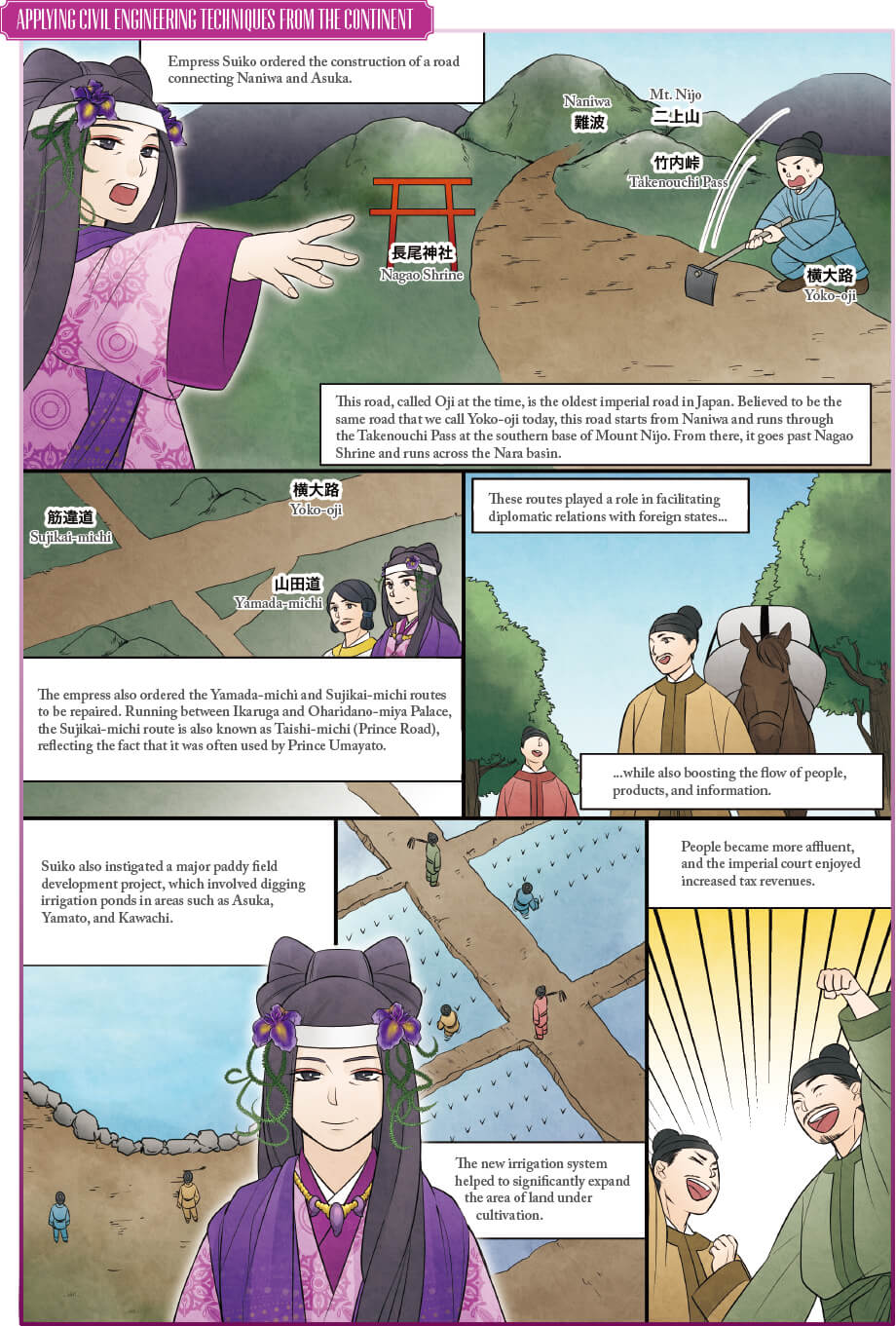Consolidating Japan’s sovereign status, introducing foreign culture, and increasing prosperity
Blending cultures and religions
Along with Buddhist sutras, the missions to Sui China brought back a calendar system and sophisticated cultural artifacts in the fields of astronomy, geography, music, and pharmacy. They also introduced the Chinese political system to Japan. Amid this influx of Chinese culture, traditional Japanese Shintoism continued to coexist with Buddhism. Shintoism had a large number of adherents, and it was long used by Japan’s imperial rulers as a bulwark for state affairs. For example, when Japan was struck by a major earthquake in 599, Empress Suiko ordered the construction of numerous shrines around the country dedicated to the Shinto god of earthquakes. And in 607, the empress issued the Edict of Godliness, in which she exhorted her subjects to worship Shinto deities devoutly. Through such actions, the empress sought to keep a balance between Buddhism and Shintoism and prevent religious conflict. Likewise, she introduced aspects of Chinese culture in such a way that they would blend in harmoniously with Japanese culture.
“Medicine hunting” evolves into modern Children’s Day holiday
According to the Nihon Shoki, Suiko’s subjects gathered in Hata on May 5, 612 for an event called kusurigari or “medicine hunting”. This court-sponsored event promoted a theme of good health, with women picking medicinal herbs near Hatamikai Shrine while men hunted deer for their antler velvet, which was thought to have medicinal value. This event evolved into the traditional Tango no sekku festival, in which people would take baths with shobu leaves and roots to ward off evil. Nowadays the holiday is celebrated as Children’s Day. Takatori, the town where Hatamikai Shrine is located, is now home to numerous pharmaceutical companies.

